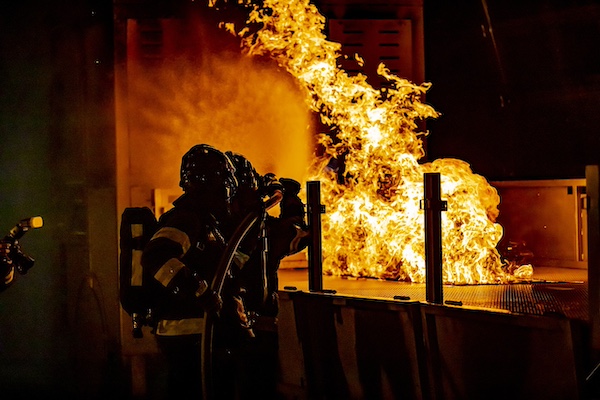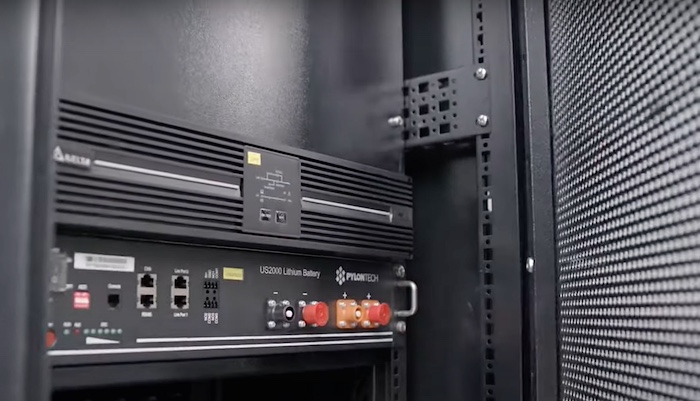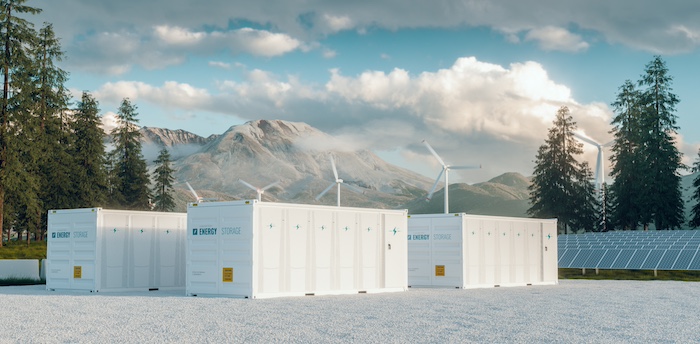Fire Risk May Threaten Energy Storage Boom
As the world accelerates its transition to renewable energy sources, the deployment of energy storage solutions has surged to meet the demands of this ongoing transformation. Battery Energy Storage System (BESS) capacity is likely to quintuple between 2023 and 2030, reaching a cumulative 411GW, as battery technology becomes indispensable for grid stability and reliability.
With this surge, however, comes a pressing need to mitigate the fire risks associated with BESS. Effectively managing the fluctuations in renewable electricity generation on the power grid is vital as fossil fuels are phased out; the scale of growth needed to meet net-zero targets underscore the critical importance of ensuring the safety and reliability of BESS infrastructure.

As the industry grows, so does the fire risk
Lithium-ion batteries are the most common and preferred choice for grid-scale storage systems, based on cost and energy density considerations. This market dominance, however, comes at a price – these batteries post a significant fire risk. With demand growing 30 percent annually up until 2030, the number of BESS fires is set to go up exponentially. To make matters worse, a recent survey found that 26 percent of battery storage systems have fire detection and suppression issues, while 18 percent also had issues with the thermal management system.
The fire risk is not simply a question of mitigating damage to the BESS asset. Smoke from thermal runaway in lithium-ion batteries is not just flammable, but toxic. With the expansion of energy storage in the next decade, this poses a serious danger if the system is installed near a dense or heavily populated area. Central to mitigating this threat is ensuring not only that the batteries themselves cause a fire, but also that fires starting around other components in the BESS asset do not spread to the battery rack.
Current fire suppression solutions don’t go far enough
Currently, industry recommendations prioritize the implementation of water deluge protection systems in all BESS projects. While these systems play a crucial role in providing cooling and fire suppression, they fall short in preventing catastrophic events such as thermal runaway. They also fail to adequately protect all components within a battery asset. To address these shortcomings, the industry must pivot towards prioritizing comprehensive protection for the entire BESS asset.
Safeguarding all components of a BESS asset is paramount, as this significantly reduces the risk of fire propagation from electrical cabinets to batteries a problem that has occurred on other renewable energy assets with the same equipment (such as wind turbines). These components also represent 40 percent of the total asset cost, amounting to up to $500,000. By implementing protection measures for electrical cabinets and incorporating total flood protection for battery racks, the industry can not only reduce the risk of fires spreading between components, but also minimize reliance on "last resort" deluge systems, which are often activated after a fire has already escalated.

Financial impact of fires necessitates upgrading fire suppression solutions
The financial implications of fire incidents on BESS assets are substantial, with developers, owners, or operators facing potential costs of up to $2 million. These costs include the catastrophic loss of assets and revenue depletion resulting from up to 1.5 years' worth of downtime. Further costs can continue to stack up following a BESS fire, including increased insurance premiums, environmental damage, and reputational harm to businesses and industries. In contrast, the cost of fitting or retrofitting comprehensive fire suppression solutions represents only a fraction of these potential losses.
The industry must also address the growing issue of false activations in fire suppression systems, which carry a substantial financial cost. False activations can reach costs of up to $900,000, posing significant challenges in terms of clean-up efforts and downtime when utilizing aerosol or water deluge solutions. Mitigating the risk of false activations is essential not only to minimize financial losses, but also to maintain operational efficiency, grid stability, and reliability.
Further responsibilities for developers
The potential for increased fire incidents poses broader implications for the BESS industry. Public opposition to BESS projects could intensify, further complicating industry growth and hindering progress towards renewable energy goals. To mitigate these risks, developers must actively engage with local authorities, fire, and rescue services, establishing communication channels and fostering collaborative partnerships to enhance fire safety protocols and emergency response capabilities.

The increasing recognition of the importance of energy storage is attracting a diverse range of participants. Concurrently, the projects themselves are evolving and installations are becoming larger and more complex. In this dynamic landscape, clear and transparent communication is essential for effective risk management. As projects expand and become more intricate, the dissemination of relevant information and best practices to mitigate potential risks effectively must be prioritized. Collaboration and knowledge-sharing among industry participants, regulatory bodies, and research institutions are crucial to foster a culture of safety and resilience in the evolving energy storage sector.
In conclusion, as the global energy transition gains momentum, addressing the fire risks associated with Battery Energy Storage Systems is paramount. By prioritizing comprehensive fire suppression solutions, engaging with all relevant participants, and implementing robust safety measures, the industry can ensure the continued growth and sustainability of the energy storage infrastructure, driving towards a cleaner and more resilient energy future.
Brian Cashion is Director of Engineering at Firetrace International, which provides bespoke solutions for suppressing fires in the renewable energy industry.
Firetrace International | www.firetrace.com
Author: Brian Cashion
Volume: 2024 May/June









